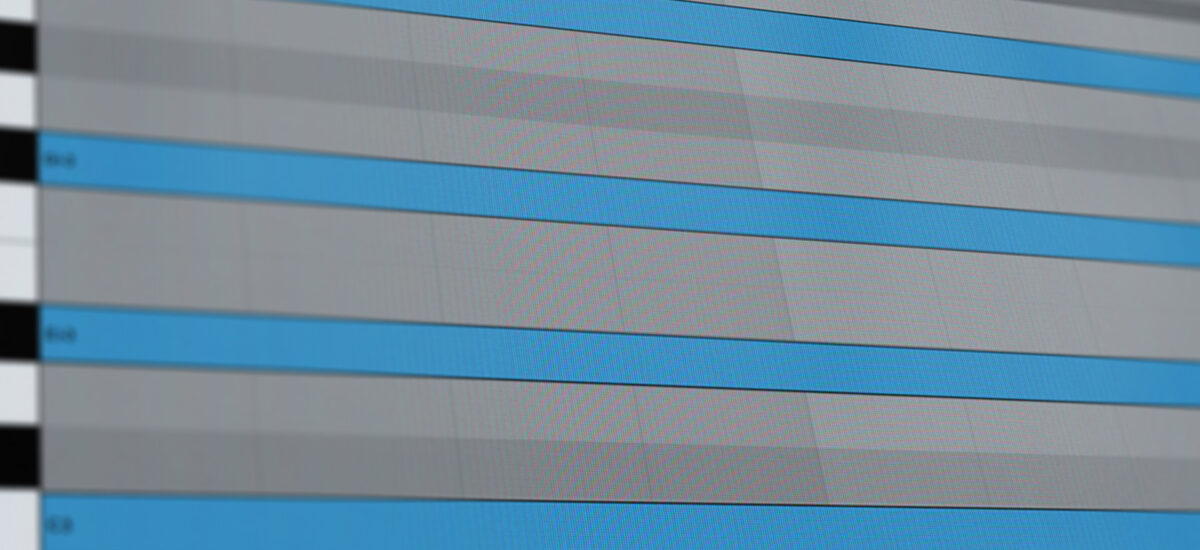
Jazz has seen a major resurgence in popularity over the last few years. Through influential artists like Kendrick Lamar’s jazzy instrumentals, as well as sampling in house music, jazz is seeing a significant wave of relevance once more. Music producers and beatmakers, regardless of the genre they primarily work with, can benefit significantly from learning some jazz theory – including how to write jazz chord progressions.
Jazz chord progressions are full of harmonic richness and versatility that can imbue your tracks with truly unique tonalities. Whether you’re making jazz rap, house, or almost any other genre out there, these progressions will hugely extend your tonal color palette.
Jump to these sections:
Start creating jazz chords in your DAW with Komplete Start, a collection of free pro-level instruments, sounds, and effects.
What are jazz chord progressions?
Jazz chord progressions are sequences of chords that were originally used in jazz music. Jazz songs use lush harmonies and complex extended chords, which add vibrant tonal colors to basic triads.
Most common jazz chord progressions come from what we call “standards.” Jazz standards are well-established compositions that have been played and covered by many musicians over time. A great deal of these songs made their debut in Broadway musicals. One of the most fundamental aspects of jazz is improvisation – so jazz musicians would take chord progressions from these musicals and improvise melodies over them, transforming them into something new.
Like other major and minor chord progressions, jazz chord progressions don’t belong to anyone, especially in their shorter forms. Feel free to use these progressions in your music and tailor them to your own needs. Try different keys and combinations, with original melodies. Something interesting is bound to present itself through experimentation.
Once more – even if you’re not making jazz, this theory will be beneficial to you. Plenty of musicians who aren’t technically “jazz artists” use jazz chord progressions and samples in their music. So why shouldn’t you include them in your songwriting?
One example of this is “Boredom” by Tyler, The Creator. This track features one of the chord progressions we’ll be discussing later, the ii-V-I:
What are basic jazz chords?
Jazz theory can feel a bit intimidating, so let’s start from the top. In order to understand jazz chords, let’s make sure you have a good grasp on major and minor triads. We’re going to assume you have a basic knowledge of music theory here as we’ll be speaking about concepts like intervals, scales, and harmony. If not, feel free to brush up on those basics and come back later.
Triads are chords that occur when three alternate scale notes are stacked on top of each other. These three notes are usually the first, third, and fifth degrees of any particular scale (You can think of this formula: use the first degree, skip the second, use the third, skip the fourth, use the fifth). The two most common triads are major and minor.
A major triad is made of a root note, a major third, and a perfect fifth. It sounds like this:
A minor triad is made of a root note, a minor third, and a perfect fifth. It sounds like this:
Jazz chords take the foundational major and minor triads and extend them with extra notes which are stacked on top of those original triads. The first extension which is usually added to a chord is called a seventh (continuing our earlier formula: skip the sixth, add the seventh).
Seventh chords come in quite a few varieties. Starting with the major 7 chord which is the root note, major third, perfect fifth, major seventh. In the key of C that would be C, E, G, B, and it would sound like this:

The chord is called Cmaj7. Note that the “maj” in the chord name refers not only to the third degree of the scale – that’s the only thing the word “major” usually describes in a triad – but also to the seventh.
A dominant 7 is arguably the most commonly used jazz chord. It consists of the root note, major third, perfect fifth, and flat seventh. In the key of C, it would include C, E, G, and Bb. When dominant 7th chords are figured, they are written without any descriptors besides the actual number 7. So C7 (without a descriptor like “minor” or “major”) is a C dominant 7 chord. It sounds like this:

(A general rule of thumb for reading jazz chords is that, unless explicitly stated, the seventh degree in the chord is flattened.)
A minor 7 chord consists of a root note, a minor third, a perfect fifth, and a flat seventh. A Cm7 chord would be made up of C, Eb, G, Bb. It sounds like this:

The final basic jazz chord we’ll look at is the minor 7 flat 5. This chord includes a root note, minor third, diminished fifth, and flat seventh. A Cm7b5 includes C, Eb, Gb, Bb. It sounds like this:

These chords can include many more extensions, but to come to grips with the basics of jazz chord progressions you should probably stick to sevenths. If you do want to experiment, continue the formula from earlier and add alternating notes from the scale above your chords.
5 popular jazz chord progressions
Now that you know the basic language of jazz chord progressions, let’s take a look at some of them in practice. We’re including the chord extensions in the names of these chord progressions for ease of reference, but on a jazz lead sheet (a notated musical score) you are often only given rudimentary chord information. From there you can add your own extensions, like sevenths, to the chords.
You should also note that these chord progressions are not as cyclical as the progressions in pop music. In jazz, chord progressions are usually parts of bigger forms, so they might be slightly harder to point out. Listen as many times as you need to identify the chord progressions in the examples given.
All examples will be demonstrated in the key of C (major and minor).
1. iim7-V7-Imaj7 (major) : Dm7-G7-Cmaj7
The ii-V-I (we say “2-5-1”) is, by far, the most common chord movement found in jazz music. These three chords can be found across countless recordings.
This chord progression works so well because of its close relationship to the circle of fifths. The root note of each chord is a fifth away from the last. That is arguably what makes this sequence so ubiquitous – it allows us to travel through the circle of fifths and modulate – or change keys – with ease.
If you only use one jazz chord progression, this should be it.
You can hear the ii-V-I in “Autumn Leaves.” This rendition is by Nat King Cole:
2. iim7b5-V7-im7 (minor): Dm7b5-G7-Cm7
This is a minor variation of the ii-V-I above. Because it is based on a different musical mode, the chords found in it are different from the major version.
The minor ii-V-i can be heard in “Blue In Green” by Miles Davis:
3. Imaj7-VI7-iim7-V7: Cmaj7-A7-Dm7-G7
This chord progression comes from the George Gerswhin song “I Got Rhythm” and is commonly referred to as the “rhythm changes.”
The progression extends and develops, but these four chords form the basis of this popular movement.
You can hear it in this version of “I Got Rhythm” by Sarah Vaughan.
4. Imaj7-II7-iim7-V7-Imaj7: Cmaj7-D7-Dm7-G7-Cmaj7
“Modal interchange” is present here, where once again we see modes coming into play.
Modal interchange occurs when chords are “borrowed” from other modes and used in a parallel key. The II7 chord derives from a parallel Lydian mode.
You can hear this progression in “Take The A Train” by Duke Ellington.
5. I7-IV7-I7-IV7-I7-V7-IV7-I7-V7: C7-F7-C7-F7-C7-G7-F7-C7-G7
This may seem like a long progression, but it only includes three chords: the I, the IV, and the V.
The form of this progression is necessary for it to be recognized as a blues. This form has been played and transformed across many recordings and has become iconic in genres outside of jazz as well.
You can hear Milt Jackson riffing over the blues progression and form on “Bags’ Groove.”
Start using jazz chord progressions for musical flavor
Jazz chord progressions have had great influence over many “non-jazz” musicians. Jazz is recognized for its innovative and rich harmonic language, so music producers and beatmakers of all types can learn a lot from the genre. Whether you’re interested in jazz itself or simply want to make your chords more colorful, jazz chord progressions are a great first step to take.
Are you looking for even more chord progressions? Check out our guides on pop, R&B, lo-fi, and emotional chord progressions.















